Client Assessment Personal Training: The Keys to Fitness

As a personal trainer, conducting a thorough client assessment is the foundation of designing safe, effective, and personalized fitness programs that help your clients achieve their health and wellness goals. A comprehensive client assessment in personal training goes beyond simply measuring weight or body fat percentage; it involves gathering essential information about a client’s health history, lifestyle habits, fitness level, and goals to create a holistic picture of their unique needs and challenges. In this article, we’ll explore the importance of client assessment in personal training, the key components to include, and how to use the gathered information to develop tailored fitness programs that drive results and client success.
The Importance of Client Assessment in Personal Training
Conducting a client assessment in personal training serves several crucial purposes:
- Establishing a Baseline: An initial assessment provides a clear picture of a client’s current health and fitness status, serving as a baseline against which to measure progress and evaluate the effectiveness of the training program.
- Identifying Risks and Limitations: By gathering information about a client’s medical history, injuries, and health conditions, you can identify any potential risks or limitations that may impact their ability to exercise safely and effectively, allowing you to make appropriate modifications and recommendations.
- Setting Realistic Goals: Understanding a client’s fitness aspirations, lifestyle factors, and personal preferences enables you to work collaboratively to set realistic, achievable goals that align with their needs and motivations.
- Designing Personalized Programs: The insights gained from a comprehensive assessment form the foundation for creating customized fitness programs that take into account a client’s unique strengths, weaknesses, and individual requirements, maximizing the potential for success and adherence.
- Building Rapport and Trust: Taking the time to conduct a thorough assessment demonstrates your professionalism, commitment to client success, and genuine interest in their well-being, fostering a strong trainer-client relationship built on trust and open communication.
Key Components of Client Assessment in Personal Training
A comprehensive client assessment in personal training should include the following components:
- Health and Lifestyle Questionnaire: Begin with a detailed questionnaire that covers a client’s medical history, current health status, medications, lifestyle habits (e.g., sleep, stress, nutrition), and exercise background. This information provides context for interpreting assessment results and identifying potential barriers to success.
- Goal Setting Discussion: Engage in a collaborative discussion to identify and clarify the client’s primary fitness goals, whether they relate to weight loss, muscle gain, improved athletic performance, or overall health and well-being. Understanding their motivations and expectations helps you align the training program with their objectives.
- Body Composition Analysis: Assess the client’s body composition using methods such as skinfold measurements, bioelectrical impedance, or circumference measurements. Tracking changes in body fat percentage, lean muscle mass, and regional fat distribution provides valuable insights into progress and helps tailor the program accordingly.
- Cardiovascular Fitness Assessment: Evaluate the client’s cardiovascular endurance using tests such as the 3-minute step test, 1-mile walk/run test, or submaximal bike or treadmill protocols. This information guides the design of appropriate cardio training components and intensity levels.
- Strength and Muscular Endurance Assessment: Test the client’s strength and muscular endurance using exercises that target major muscle groups, such as push-ups, squats, or bench press. Recording baseline performance allows you to track improvements and ensure the resistance training program is progressive and challenging.
- Flexibility and Mobility Assessment: Assess the client’s flexibility and range of motion using tests like the sit-and-reach or shoulder flexibility test. Identifying areas of tightness or restriction helps guide the inclusion of appropriate stretching and mobility exercises in the program.
- Postural and Movement Analysis: Observe the client’s static posture and dynamic movement patterns to identify any imbalances, asymmetries, or compensations that may increase injury risk or hinder performance. This information informs exercise selection and technique coaching.

Using Assessment Data to Develop Personalized Fitness Programs
Once you’ve gathered the necessary information through the client assessment, use the data to create a tailored fitness program that aligns with the client’s goals, needs, and capabilities:
- Identify Priority Areas: Analyze the assessment results to identify the client’s primary strengths, weaknesses, and areas for improvement. This may include factors such as cardiovascular fitness, strength imbalances, or postural issues that require targeted attention.
- Set SMART Goals: Collaborate with the client to set Specific, Measurable, Achievable, Relevant, and Time-bound (SMART) goals based on their assessment results and personal aspirations. Break down long-term goals into smaller, manageable milestones to maintain motivation and track progress.
- Design Progressive Programming: Create a progressive training plan that incorporates a balance of cardiovascular conditioning, resistance training, flexibility work, and functional movement exercises. Tailor the exercise selection, intensity, and volume to the client’s current fitness level and goals, allowing for gradual adaptation and improvement.
- Incorporate Lifestyle Modifications: Address any lifestyle factors identified in the assessment that may impact the client’s progress, such as poor nutrition habits, high stress levels, or inadequate sleep. Provide guidance and resources to support healthy lifestyle changes that complement the fitness program.
- Monitor and Adjust: Regularly reassess the client’s progress using the initial assessment as a benchmark. Use the updated data to make informed adjustments to the program, ensuring that it remains challenging, effective, and aligned with the client’s evolving needs and goals.
Enhancing Your Client Assessment Skills as a Personal Trainer
To effectively conduct client assessments and design personalized fitness programs, investing in your education and professional development is essential. The College of Health and Fitness (COHAF) offers a range of nationally accredited courses, such as the Certificate IV in Fitness (SIS40221), which provides aspiring personal trainers with the knowledge, skills, and practical experience needed to excel in client assessment and program design.
By completing a comprehensive personal training course, you’ll gain a deeper understanding of exercise science, assessment techniques, program periodization, and client communication strategies, enabling you to conduct effective assessments and create highly personalized, results-driven fitness programs.

Conclusion
Client assessment in personal training forms the foundation of effective, personalized fitness programming. By gathering essential information about a client’s health status, lifestyle habits, fitness level, and goals, personal trainers can design safe, targeted, and progressive programs that optimize results and client satisfaction.
To enhance your skills in conducting client assessments and creating tailored fitness programs, consider pursuing a recognized qualification like the Certificate IV in Fitness (SIS40221) from COHAF. With the right education, practical experience, and a commitment to ongoing learning, you can become a highly skilled personal trainer who drives meaningful results and lasting change in your clients’ lives.
Remember, client assessment in personal training is an ongoing process, not a one-time event. By regularly reassessing progress, celebrating milestones, and making data-driven adjustments, you can ensure that your clients remain engaged, motivated, and on track to achieving their health and fitness goals. As a personal trainer, your ability to conduct comprehensive assessments and design personalized programs is the key to building a successful, rewarding career that transforms lives through the power of fitness.
Learn how to perform client assessment personal training …
If you’re contemplating a career as a personal trainer, then feel free to reach out to our team to discuss your options. The College of Health and Fitness has fitness courses that are suitable and we’re happy to discuss your options.
THE TOP TEN BENEFITS OF BECOMING A PERSONAL TRAINER:
- Helping others achieve their fitness goals
- Flexible work schedule
- Career growth opportunities
- Become your own boss
- Continuous learning and development
- Networking opportunities
- Active and healthy lifestyle
- Emotionally rewarding work
- Variety in the work environment
- Potential for specialisation
